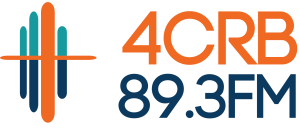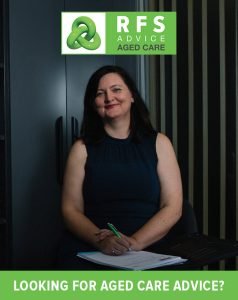So, what is this potential hidden death tax?
This is the tax that is payable when your super or pension is left to an adult non-dependent child.
Let’s deal with your pension to start with as you have some control of the outcome. We will look at superannuation next.
What happens to your pension in the event of death?
When you establish an income stream (pension), one of the most effective ways to manage the payment in the event of death is to have a reversionary pension to each other. That is, if something happens to one of you in a couple, then the pension simply reverts to the other person and is continued to be paid. In this scenario there are no negative tax consequences.
Where the issue arises is when you make an election to leave some of the proceeds to one of your adult kids. This can either be from superannuation or a pension account.
This is where the devil is in the detail and what can appear to be simple, can become quite complex. We will explain in simple terms.
If when you added the money into super, you did not claim a tax deduction, when these proceeds come out there will be no tax issues (this is simple enough).
However…
If you did claim a tax deduction for some of these amounts when they went in as a contribution, either personal or as part of the super guarantee, the contributions attracted a 15% contributions tax on the money that went in, which saved you tax at the time as you would have otherwise paid your marginal tax rate. BUT…
And here is the big BUT…
When these proceeds are directed to an adult non-dependent child, in the event of death, these proceed are then taxed. As you can appreciate, when we are referring to a ‘child’ in this case, we could be referring to someone in their 60s!!!
Understanding the tax treatment on superannuation and pensions is important and in the below information we will talk through the tax at a high level, however we strongly urge people to get advice on your own situation.
Let’s look at the components of a superannuation balance.
When a superannuation death benefit is paid to a non-dependent adult child in Australia, the tax treatment depends on the components of the superannuation balance. The taxation is as follows:
1. Taxable Component (Taxed Element)
- Taxed at 15% plus Medicare Levy (2%), making it 17% total. (referred to above with people claiming a tax deduction for their contributions)
2. Taxable Component (Untaxed Element) (only a small amount of people)
- Taxed at 30% plus Medicare Levy (2%), making it 32% total.
3. Tax-Free Component
- No tax is payable
The below link from the Australian Taxation Office (ATO) will provide further information on paying death benefits and is a great resource to look at the definition of dependents.
Let’s look at an example to try and simplify things.
Example: taxed and tax-free proportions on super income stream
Anna dies on 1 December 2015 at 66 years old. When she dies, Anna is receiving an account-based super income stream.
The tax-free and taxable components of her income stream are worked out as follows:
- tax-free proportion of 25%
- taxable proportion of 75%.
Anna’s account balance when she dies is $200,000. This amount is paid to her beneficiary, her spouse Brian, as a lump sum on 11 March 2016. As the lump sum is paid from the same super interest as Anna’s income stream, the proportions of the tax-free and taxable components are exactly as they were for her income stream.
The tax-free and taxable components of Brian’s lump sum death benefit are:
| Tax-free component | = $200,000 × 25% |
| = $50,000 | |
| Taxable component | = $200,000 − $50,000 |
| = $150,000 |
As Brian was Anna’s dependant, the total benefit is tax-free.
If Brian was a non-dependant, the taxable component is assessable.
Untaxed element (This will not be relevant to most people)
The untaxed element includes amounts where a fund has not paid any tax on the contributions or earnings. Higher rates of tax will apply to benefits containing an untaxed element.
Untaxed super funds are generally run by Commonwealth, State or Territory government departments, and are generally either:
- public sector super schemes
- constitutionally protected funds.
The taxed element is the key to dealing with this issue
The taxed element includes amounts where a fund has paid 15% tax on the contributions or earnings. Concessional rates of tax will apply to benefits containing a taxed element. A taxed element may also include an amount that has been rolled over from an untaxed source.
We appreciate all the above sounds complicated and in truth, it is complicated. The best part is you have options and getting this right and receiving the right advice in this space will really add value to you, your family and your legacy.
There are strategies like ‘cash and re-contribution’ strategies with your super, however it wouldn’t be appropriate to go into this on the radio as this is specific advice and will change based on your circumstances.
The most important message I can give you is to talk to your adviser, talk to your super provider if it is an industry-based fund. Get professional advice. Ask them to help you better understand this issue and how it could impact your situation.
Or
Reach out to one of our team at RFS Advice.
Honouring your Legacy
Someone is sitting in the shade today because someone planted a tree a long time ago. (Warren Buffet)
Have you ever wondered how it is that you have worked hard your whole life and been well paid but there seems to be a group of individuals and families that are miles in front of you?
What is their secret?
Like everything, not everyone starts from the same spot. Some families have had a head start and are well down the track, before the gun has even gone off.
They get to build on the wealth of previous generations and establish a legacy for the next.
Can that be you and your family?
It requires patience and planning, but it is a possibility for any family to start that has accumulated assets throughout their lifetime. The key is compounding and keeping the asset base together. It may sound easy, but the reality is, it is not!! The norm in Australia is when estates are wound up, everyone goes their separate ways. Sound familiar?
A good example of where it does work are long running family businesses or farming families. They have built on the foundation over time and compounded to consolidate their positions.
The power of compounding
We need to keep the capital together and let it grow.
If you invested $1 million and let it grow at 7.2% for 10 years it could double to around $2 million dollars. If you let it grow another ten years after that it could accumulate to over $4 million.
7.2% net growth is a reasonable target to aspire to. Yes, you have inflation eroding some purchasing power, but it would still be a very useful target.
Let’s break this down into net Asset Position for strategies on how to start your legacy.
Group 1 – Homeowner with additional net assets under $500,000:
- The income for this group is generated from the Government age pension and a possible part self-funded pension.
- The net assets in this instance will be the home plus any super/savings they have accrued.
- This group could still have a net asset position well in excess of $1 million as house prices have increased so much in recent times.
Group 2 – Homeowner with additional net assets of around $1 million:
- The income for this group would be generated from a self-funded pension, commercial properties or a business or a possible draw down from other assets.
- Their portfolio would probably consist of some income producing assets as well as capital assets.
- There will be net assets of several million dollars.
- Some different family members may wish to honour a legacy and maintain ownership of some of the assets.
Group 3 – Homeowner with additional net assets well over several million dollars:
- The income for this group will be a self-funded pension and possible draw down from other assets.
- They would not be entitled to the Government age pension payment.
- Their portfolio would probably consist of some income producing assets as well as capital assets.
- There will be net assets of several million dollars and there could be significant benefits in maintaining the assets and continuing to generate an ongoing income stream.
- Some different family members may wish to honour a legacy and maintain ownership of some of the assets.
Planning for the groups:
Group 1 Homeowner with additional net assets under $500,000
Within this group we would be looking to ensure that you are receiving your maximum Centrelink entitlements and making sure you use these benefits at every opportunity. A large number of people in this group now actually have assets worth well over $1 million dollars and this is usually the home. Fortunately, under the age pension eligibility tests, the home is not included when assessing entitlements for the age pension.
There is often a hard choice though in this category as people can find that they have some assets but feel income poor. They may want to access the equity in their home to have additional funds for their retirement. It can be a difficult decision when it comes to maintaining their home versus selling the home and downsizing to access some of that equity but then potentially losing all or part of the age pension as their asset base is now higher under the pension eligibility tests.
For people in this group there is a key focus for them on generating retirement income. They need this managed to maximise a full or part age pension and top up their lifestyle out of their savings. You may be entitled to some homecare packages.
The legacy in this instance is probably the family home and they will tend to focus on maintaining this asset if it is worth a significant value versus a part age pension.
Group 2 Homeowner with additional net assets of around $1 million
At RFS advice we help lots of people that have assets in and around the $1 million mark and those well above this, every day. They have a focus on generating an ongoing income, maintaining the legacy and growing wealth for future generations.
We can help them focus on generating their ongoing income need to provide for this desired lifestyle. We then set a goal on maintaining and building the capital base along the way.
Some of these clients will help the kids and grandkids along the way. Others will wish to maintain control of the capital base.
Some of these clients could have a family business that the kids work in. We help the family group work on a transition of the business over to the next generation. For a lot of clients, they simply intended to sell the business and retire. That is, sell the business that provides for their kids and grandkids. An alternate view is to pass control over and potentially draw an income over time from the business.
The key to retirement is income. By keeping the business in the family, it will maintain your income in retirement. It provides for future generations. It allows the next generation to kick-start their career by leveraging off all your hard work.
A traditional approach of selling the business, may not be the best as you may still need to support the kids and grandkids while they start again.
Each family and business are different but the concept is what is important.
Group 3 Homeowner with additional net assets well over several million dollars
We also work with families in group three to help manage all their assets and others, where we manage some of the assets. We are finding that a lot of family groups want to know we are here if their health changes and they want someone to take over the decision making and management as well as someone working with the next generation. Someone who understands their financial situation.
Traditionally these higher net worth families have managed a lot of their assets themselves. They are moving from a case of creating wealth to protecting wealth. That is a different skillset.
We call this off farm assets. So, in farming terms let’s have some assets outside the farm or for business clients let’s have some assets outside the business.
These groups will have assets that it makes sense to compound together and continue to build off as they have large assets that no single family member could afford on their own. Then separate to this, each family group will have their own asset positions.
Each of the different family groups will have a different problem that needs a different approach. There is no single solution, and these can change along the way.
The key concept is to have the correct team to work with you along the way to identify and deliver your desired outcome.
Most have the same desires:
Grandparents, heads of the family: They could be in retirement living or Aged Care and they want quality of life.
Parents or retirees: They want their desired income to fund their desired lifestyle.
Adult kids: They have kids at school and mortgages and are time poor. They need help.
Grandkids: They will benefit or not, depending on the actions of everyone above.
Things to think about or concepts to be aware of:
- Spend the capital or invest the capital and live off the income?
- Help the kids now along the way or inherit more later?
- Do you work together as a family on some assets and not others?
- Do you all go your separate ways?
- Do you want to create a legacy?
Our team would love to help your family out.
All these notes are on our website.
General advice warning – the information and any advice provided in this document is information only and makes no recommendation or gives any opinions. It has been prepared without taking into account your objectives, financial situation or needs. Because of that, you should, before acting on the advice, consider the appropriateness of the advice, having regard to those things.
Ask Troy a Question.
Simply fill in the below form with your question and we will get back to you shortly.
















